Thanks to our faces we can breathe, eat, drink, and communicate with each other. Automatically. We don’t even have to think about it. But, these functions of our faces have another role – they drive the growth and development of our heads and faces, otherwise known as craniofacial growth and development.
And even though we don’t think about how we breathe, drink, chew, swallow, and talk, there are right and wrong ways to do them. If done correctly, our face grows optimally. If done incorrectly, the face grows poorly and leads to many common medical problems.
Connecting the Dots
Healthy faces, healthy bodies, healthy people
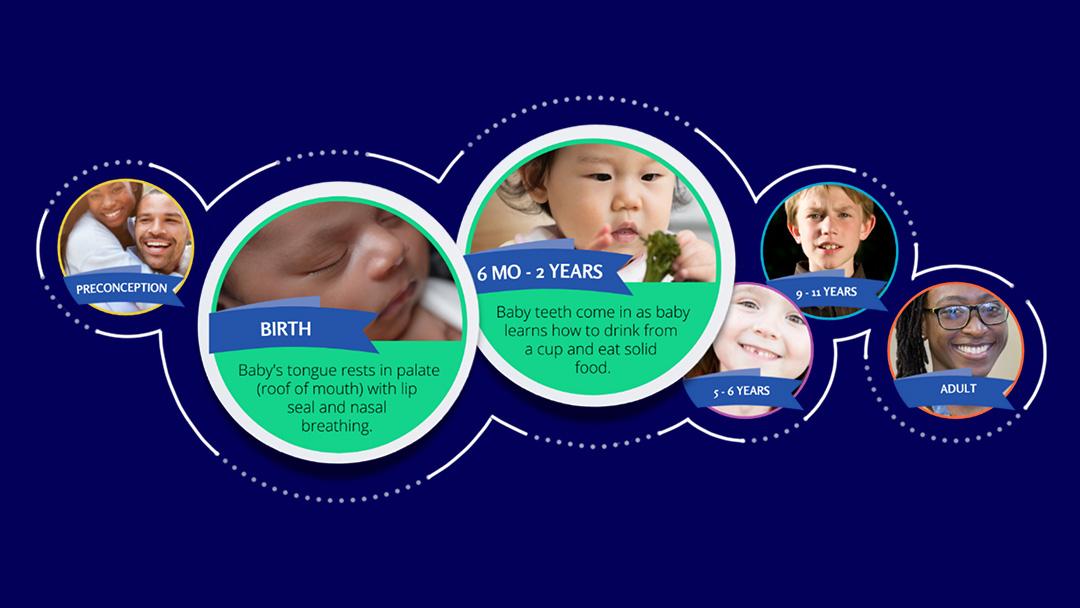
Our facial functions are established in the first two years of life.
—Dr. Traci Jones, DO
Birth - 2 Years
Sleeping.
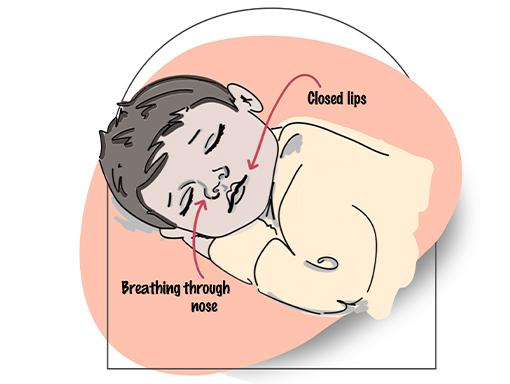
Breastfeeding.
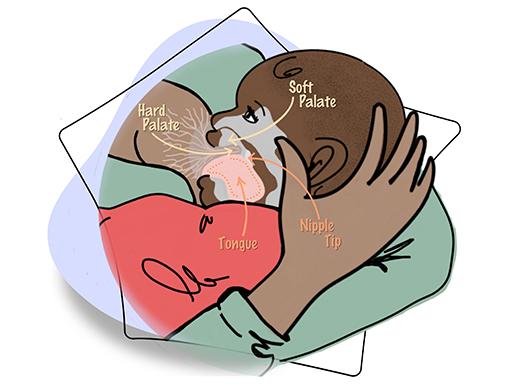
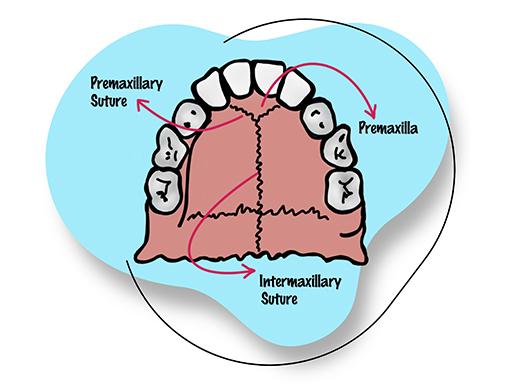
Just like we exercise our arms and legs, we also need to exercise our faces. Nursing is baby’s facial exercise.
—Dr. Traci Jones, DO
Balance of Forces.

Breathing, chewing, and swallowing is facial exercise for children and adults.
—Dr. Traci Jones, DO
Functional Swallow.
Between one and two years of age, the one and two year molars come in. When this happens, the child bites down so the molars come together triggering the transition of the swallow from an infantile (tongue thrust) swallow to a functional swallow (also known as a mature swallow). In an infantile swallow, the tongue moves forward and up into the palate. In a mature swallow, the tongue moves solely up into the roof of the mouth. This transition from infantile to mature swallow happens by the age of two years and indicates that facial functions are fully developed.

Growing Forward.
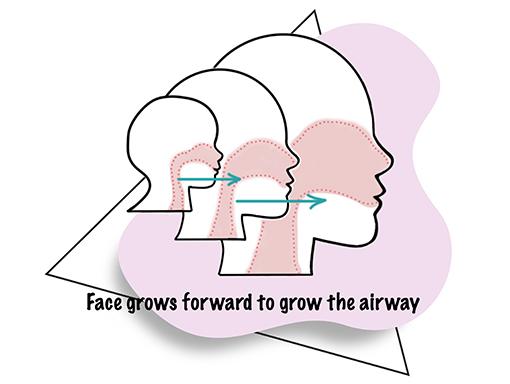
Explore the Patient Center
Healthcare shouldn't be complicated. The Patient Center provides practice information, scheduling tools, educational resources, and additional health content all in one place. Start exploring today!


